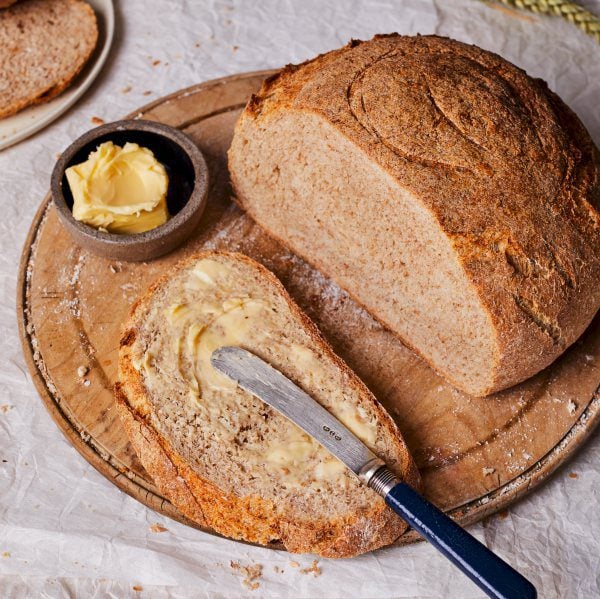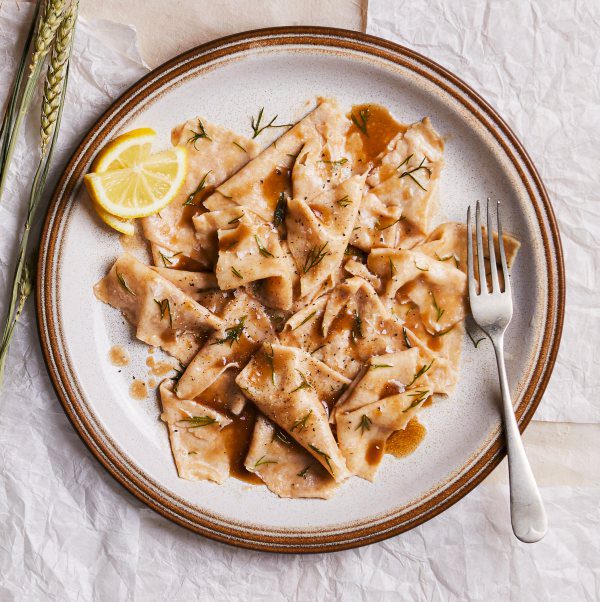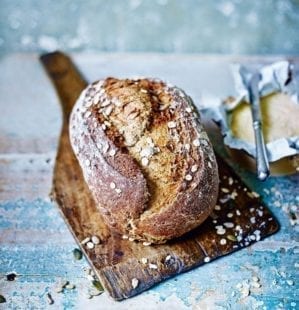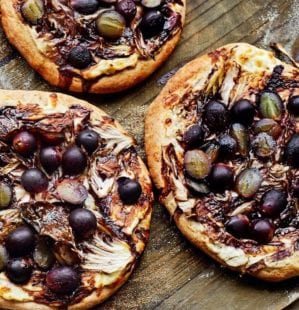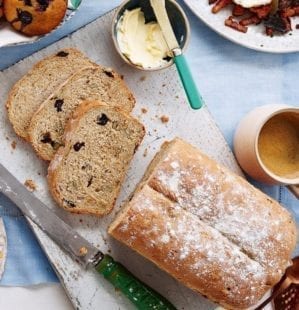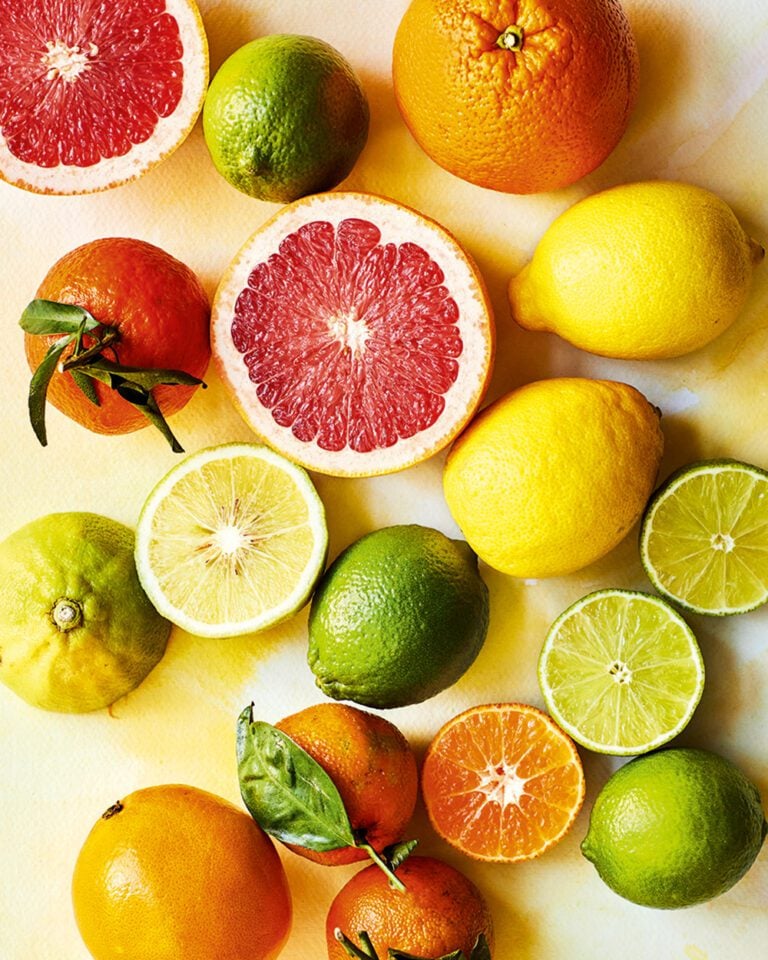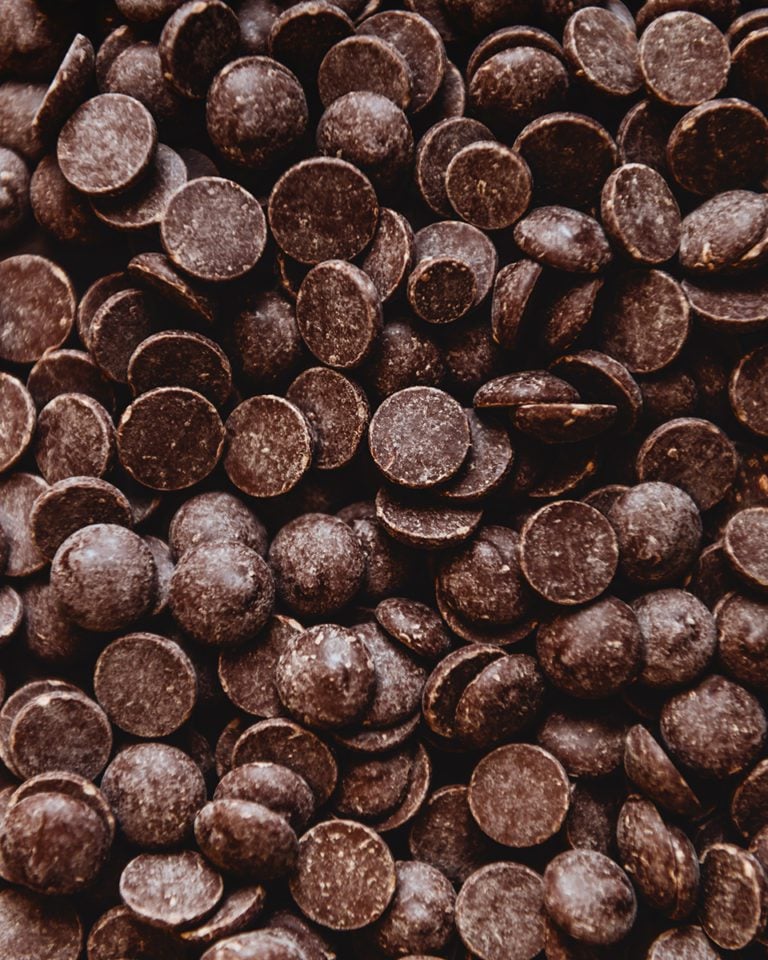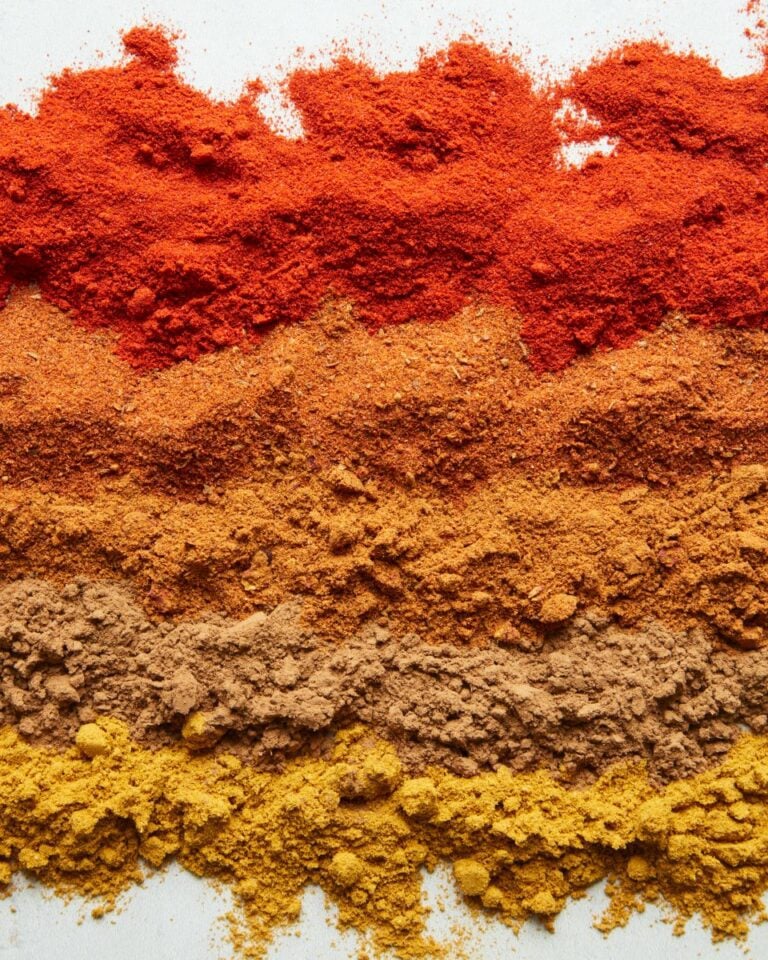Why farmers and bakers are excited about heritage wheats
From home baking to shop-bought bread, pasta and cereals, wheat is at the core of our diet, but there’s a problem with wheat production – it’s about crop diversity and it’s a big issue. It’s not all bad news, though. Eating lesser-known wheat varieties could have huge benefits for the planet, and be better for us, to boot. Clare Finney finds out why wheat diversity is so important and what we can do to help.
Once you’ve sourced your sustainable flour, try our fabulous new baking recipes using lesser-known wheat varieties…
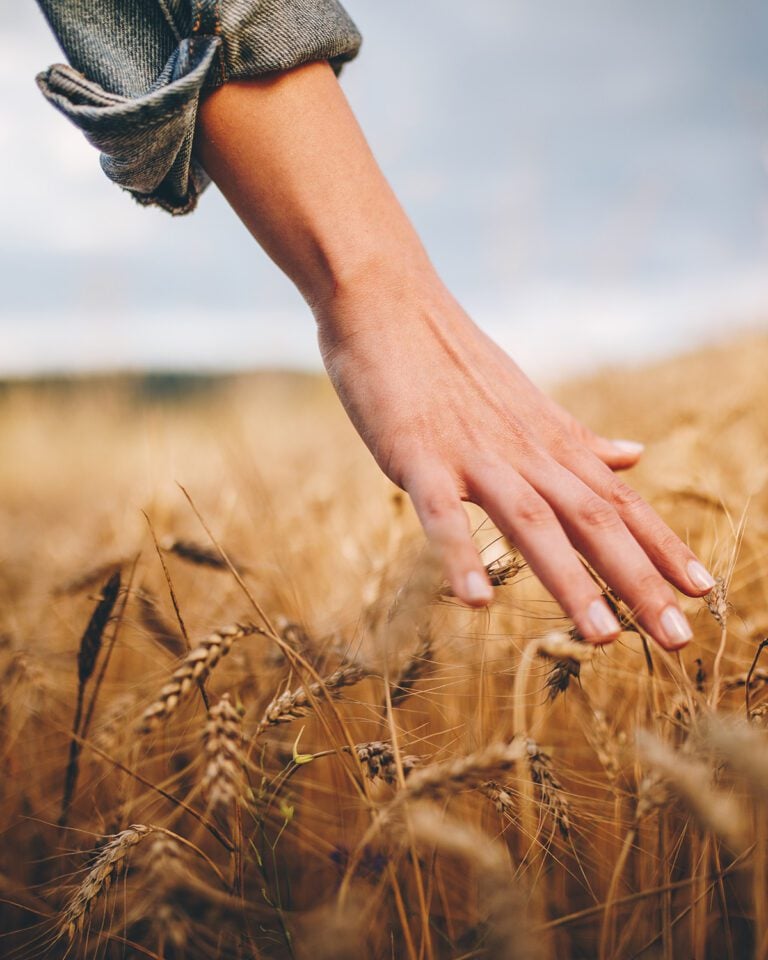
Don’t be fooled by the multitude of different breads and breakfast cereals on supermarket shelves. Most of them are made from just one or two plant varieties. And that’s the big problem with our wheat – it contains limited genetic diversity. In fact, wheat diversity has been declining globally since World War II, when plant varieties were genetically engineered to grow more quickly and produce higher yields, helping to put much needed calories in the mouths of the population.
A few modern strains displaced the myriad regional wheat varieties around the world that had become highly adapted to their individual landscape and conditions. “Key to the different varieties of wheat is not so much having them for their own sake, but the genetic diversity they represent,” says Josiah Meldrum, co-founder of Hodmedod’s, a wholesaler and retailer that works with British farmers to support fair and sustainable UK production of grains and pulses.
The wheat that was designed to address the hunger crises of the 20th century is creating environmental crises now
Why does wheat diversity matter?
Regional wheat varieties tended to have deep roots (better to scour for nutrients) and tall stems, which put distance between the seed head and any fungal disease in the soil. Modern varieties had none of the adaptations or resilience of the grains they replaced, and their short stems, shallow roots and genetic homogeneity have rendered them dependent on pesticides, herbicides and carbon-intensive chemical fertiliser.
“You need to use fertiliser to get the high yield, but the fertiliser makes the weeds grow too, so then you need to use herbicides to control the weeds, which depletes the soil, so you need to add biological amendments,” explains Fred Price of Gothelney Farm in Somerset. Globally this has led to land degradation, desertification, disease outbreaks and the decline of pollinators, all compounded by climate change.
Diverse grain, grown in good soils, transforms bread, pasta, pizza and so on from fuel to nutrient-dense, flavourful food
What’s the solution?
For years, Price and many other farmers were caught in this “hamster wheel, where I can’t control my prices, I’m dependent on bought seed and [chemical] inputs, and my only means of profit are yield and scale”. Every few years, a disease or weed variant would defeat the resistance of his wheat crop, and the crop would fail – so he had no choice but to buy a new but genetically similar variety of wheat, developed by seed companies owned by or working closely with those producing agrochemicals. For farmers, this has become a law of diminishing returns, and it’s had a major impact on consumers too.
The frequent use of chemicals has depleted the soil, making it more susceptible to flooding and compromising the nutritional value of the resulting grain. “By growing population wheats – genetically diverse varieties [see The Superhero Wheat, below], we can put seeds back into the hands of farmers, so they don’t need synthetic inputs and don’t need to buy seed every year,” says Meldrum. That restores farmers’ agency, the health of their land and, ultimately, our health too. “Conventionally farmed, well grown wheat will give your body more minerals gram for gram, as well as more vitamins and more nutrition,” says baker Anna Higham of Quince Bakery in London. “Eating it will do you good, not just give you sugars to survive.”
It’s not just the flour you buy that will support farmers who are improving the health and carbon content of the soil. Regeneratively farmed meat and pulses are also part of the solution
Will it really make a difference?
Addressing soil health, human health, climate change and the financial security of farmers in one fell swoop sounds ambitious until you stop to consider how interconnected these issues are and, often, grain is the connection. “Wheat is one of the most consumed species in the world,” says Meldrum: as flour and breakfast cereals, of course, but also as animal feed. When you consider how nutritionally valuable grains can be to humans, that’s really inefficient. “Suffolk, for example, is a huge cereal-producing area, but 50 per cent of the land you drive through is dedicated to animal feed.”
This interconnectedness can be turned to our advantage. In the past decade, Price has converted to a mixed farming system in which grains are sown alongside pulses, to be sifted out and fed to pigs, while the grain goes to local bakeries. Initially the legumes were there to fix nitrogen into the soil and increase its productivity, but increasingly Price found intercropping increased the protein in the wheat, thus its culinary and nutritional potential.
More recently, Gothelney has joined a growing number of farms rotating grain crops with herbal leys (areas of legumes, herbs and grass). These are grazed by a local herd of beef cattle, whose trampling and manure further enriches the soil, boosting the nutrients, microbial life and carbon it can contain.
Buying regeneratively farmed wheat – and products containing it – is easier than ever, be it direct from the smallscale mills or from farms and bakeries.
Inspiring change
Gothelney Farm isn’t a one-size-fits-all model, but it’s a telling example of how “by paying farmers a better price, we encourage them to develop diversity and be part of a wider system change”, says Meldrum. It’s part of the South Grain Network, one of 11 networks of UK growers, bakers and millers committed to the cultivation and use of alternative cereals – and to trading them on a human, as opposed to global, level. Says Meldrum: “It’s easy to feel panicked about the urgency at which change needs to happen, but that can draw out the wrong response. The grain network is good at inspiring change, by bringing communities together around this seemingly boring commodity crop that’s the crux of human civilisation.”
In 2012, when Hodmedod’s was in its infancy, this was almost impossible to conceive. “It’s extraordinary how much things have changed, and the excitement from artisan bakeries is spilling over into bigger bakeries,” Meldrum continues. He cites the work of Wildfarmed, a regenerative food business with a network of 90 farmers employing practices such as using cover crops and grazing livestock. Says new product development manager Rachel Stonehouse: “More than 400 customers, from bakeries and restaurants to supermarkets and football clubs, have joined us on our journey to help transform landscapes by using Wildfarmed flour.” Those customers include Marks & Spencer, Ocado, Franco Manca and Pizza Pilgrims.
“That wouldn’t have been possible 10 years ago,” says Meldrum. According to Stonehouse, demand is growing from consumers, partly because it’s such a simple change: by buying better flour and bread we can help encourage more farmers to farm in a regenerative and sustainable way, benefitting the environment and our own health. “By making regenerative flour accessible to everyone, the act of buying a loaf of bread is such a simple way to transform landscapes across the country.”
The superhero wheat
Unlike modern cereals, population wheats take “a number of varieties, cross them every which way so they’re genetically diverse and then plant them all in a field,” says baker Anna Higham. “Each year, as you grow and resow the crop, the plants that survive will be best suited to that piece of land, giving the wheat strength and resilience.”
The Organic Research Centre (ORC) and Wakelyns Agroforestry have been working since 2001, using 20 different varieties to produce a wheat that offers good levels of yield and quality: YQ wheat. More farms in the UK are now growing ORC/Wakelyn’s YQ wheat and other population wheats are currently in development.
Try these sustainable baking recipes using YQ flour
Silk handkerchiefs pasta with dill, brown butter and lemon
Malt iced buns with raspberry icing
What to look for
Stoneground flour It often has more retained nutrients than flour from commercial high-speed steel mills. Find small-scale flour producers on the Britain & Ireland Community Grains Association website: bicga.org.uk
Key brands Buy YQ or heritage flour from Hodmedod’s, Wildfarmed and Matthews Cotswold Flour – online and in independents.
In the supermarket Instead of buying flour made from regular wheat, choose flour from heritage grains such as spelt, rye and einkorn from brands like Doves Farm.
Want to make more planet-positive changes to your diet? Find all the info you need in our sustainability hub.
Subscribe to our magazine
Food stories, skills and tested recipes, straight to your door... Enjoy 5 issues for just £5 with our special introductory offer.
Subscribe
Unleash your inner chef
Looking for inspiration? Receive the latest recipes with our newsletter
